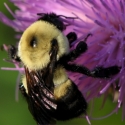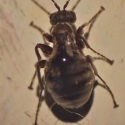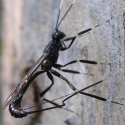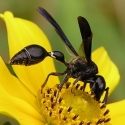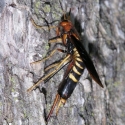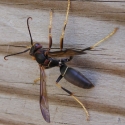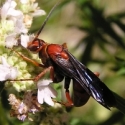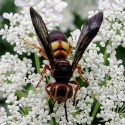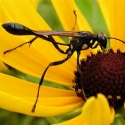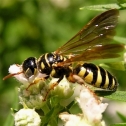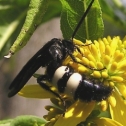Wasps / Bees
Wasps belong to the order Hymenoptera, along with bees and ants. Contrary to popular beliefs, most wasps lead solitary lives and many species do not sting. Some wasps have long tails which look like stingers, but are actually ovipositors used for egg-laying. Members of this group can be identified by their 2 pairs of wings, the hind pair being smaller. Often there is a narrow constriction of the body between the thorax and abdomen. Even though some wasps will sting humans when provoked, they are very beneficial to humans by pollinating flowers and keeping down populations of pest insect species.
Separating wasps from bees can be challenging. Generally, most bees are hairy and wasps are less so. Most Bees have modifications for collecting pollen, while wasps do not. However, as molecular research on insects proceeds, the division between bees and wasps becomes more blurred and it is possible that eventually some bees and wasps will be lumped together at the family level. There are also many other insects such as flies, moths and beetles that mimic wasps and bees.
All species go through a complete metamorphosis and, with the exception of the sawflies, the larvae are carnivorous. Adults of most species feed on flower nectar. The immature stages are usually placed in nests in subterranean burrows or existing cavities in dead wood or in the ground. Some build nest structures of mud, paper or resin and others stimulate the growth of galls on plants. Parasitic species lay eggs on a host organism and the larva feeds on it and exits from the host when it emerges as an adult.
Most of the wasps and bees shown in NatureSearch have been identified by volunteer experts on the website, BugGuide (click here for more information). It is an invaluable resource for identifying and learning about insects of North America.
Disclaimer: The content of NatureSearch is provided by dedicated volunteer Naturalists of Fontenelle Forest who strive to provide the most accurate information available. Contributors of the images retain their copyrights. The point of contact for this page is: Babs Padelford.

